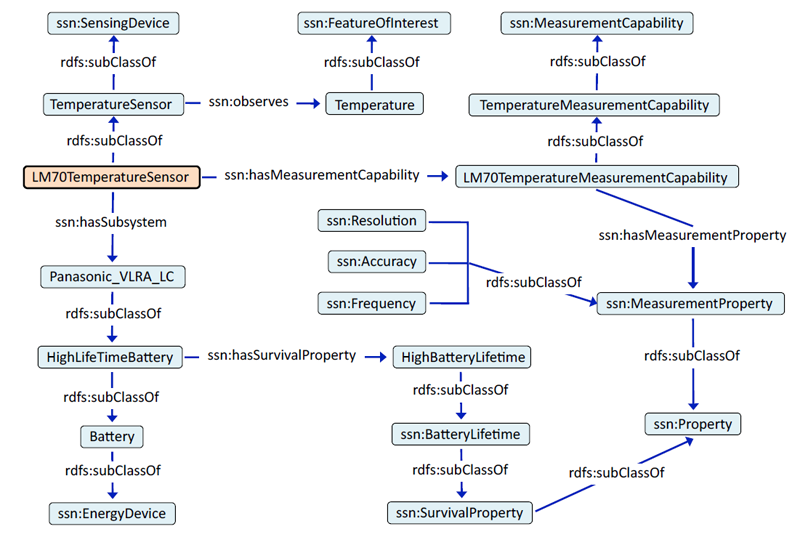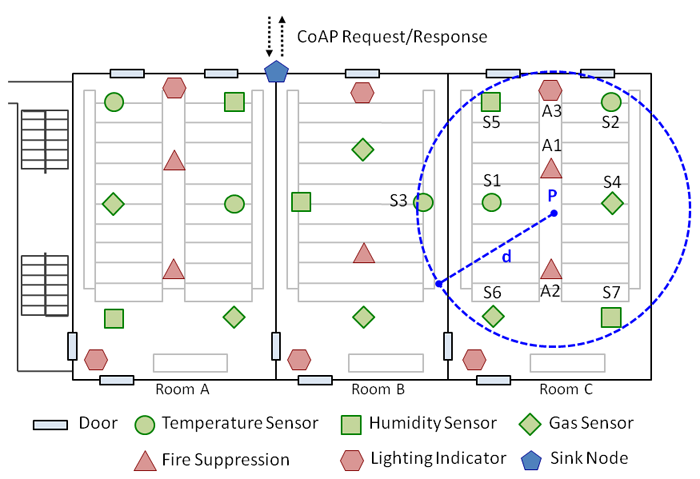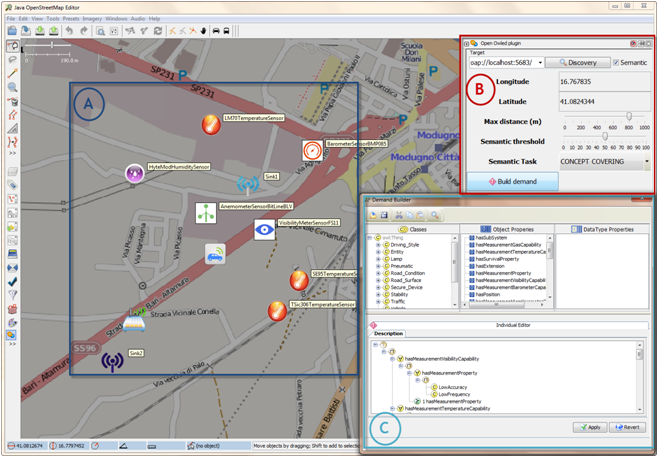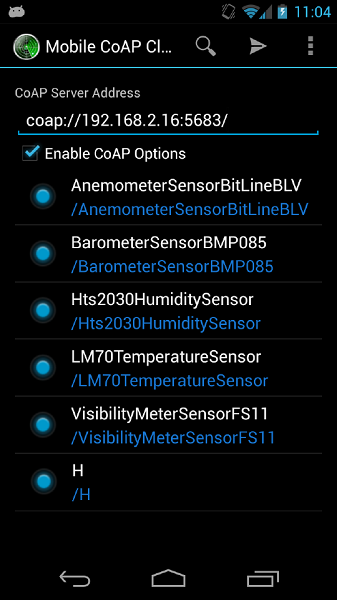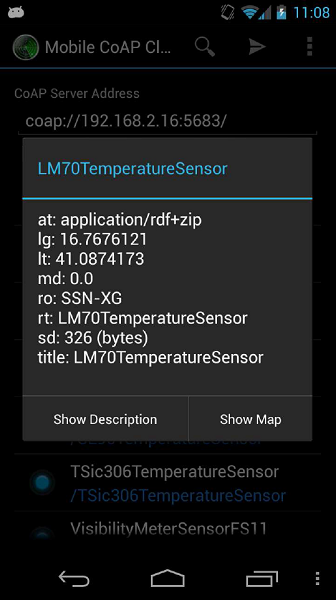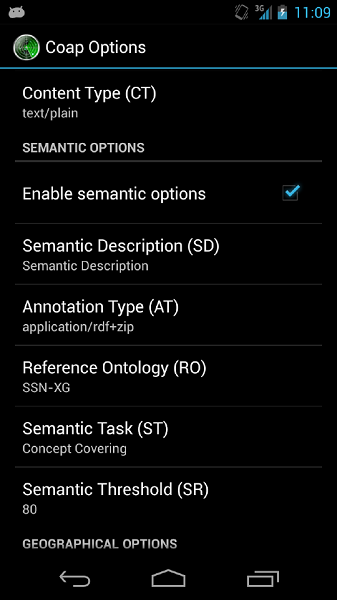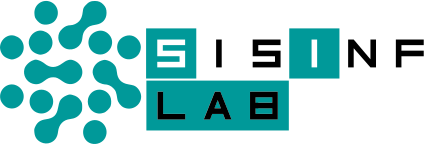Main restraints curbing a deep integration of Semantic Sensor Networks (SSNs) with complex and articulated architectures, basically reside in too elementary allowed discovery capabilities. Several studies agree advanced querying and retrieval mechanisms are needed to truly fulfill the potential of the SSN paradigm. The proposed approach presents a novel SSN framework, supporting a resource discovery grounded on semantic-based matchmaking [5].
Offered contributions are:
- a backward-compatible extension of Constrained Application Protocol (CoAP) [4] resource discovery;
- data mining exploitation to detect high-level events from raw data;
- employment of non-standard inference services [5] for retrieving and ranking resources;
- adoption of W3C standard SSN-XG ontology [6] to annotate data, events and device features.
An overall framework for the Semantic Web of Things (SWoT) [7] has been designed in [3] managing semantic-based annotations of data streams, devices, high-level events and services with a well-defined meaning w.r.t. a shared domain conceptualization (i.e., ontology). An explicative architecture of the proposed framework is depicted in Figure 1. A CoAP-based SSN is composed by several sensors deployed in a given area communicating through a local sink node, acting as cluster head, with a gateway interfacing the network toward the rest of the world.
Each sensor is featured by data oriented attributes, as usual, but also by a semantic annotation describing its characteristics and functions. Sink nodes will allow sensors to register their semantic description as a CoAP resource and embed a lightweight matchmaker enabling ontology-based inferences on annotated metadata. Devices within the SSN can be accessed through CoAP clients or remote applications. In order to support the novel semantic-based resource retrieval, slight extensions were devised to the IETF CoAP and CoRE Link format discovery protocol outlined in [1,2]. They are based only on an innovative usage of standard URI-query attributes and on the addition of new ones. Consequently, the resulting framework is still fully backward compatible: servers which do not support semantics will simply reply to requests returning no resource records.
The effectiveness of the proposed approach is motivated by two case studies regarding:
- fire risk prevention and air conditioning control in a university building [1];
- environmental risk prevention for Vehicular Ad-hoc NETworks (VANETs) [2,3].
Publications
Scientific publications about Semantic Sensor Networks
-
M. Ruta, F. Scioscia, G. Loseto, F. Gramegna, A. Pinto, S. Ieva, E. Di Sciascio. A logic-based CoAP extension for resource discovery in semantic sensor networks. 5th International Workshop on Semantic Sensor Networks. Proceedings of the 11th International Semantic Web Conference (ISWC 2012), Volume 904, page 17-32 - nov 2012.
-
F. Gramegna, S. Ieva, G. Loseto, A. Pinto. Semantic-enhanced resource discovery for CoAP-based sensor networks. 5th IEEE International Workshop on Advances in Sensors and Interfaces (IWASI 2013), page 228-233 - jun 2013.
-
M. Ruta, F. Scioscia, A. Pinto, E. Di Sciascio, F. Gramegna, S. Ieva, G. Loseto. Resource annotation, dissemination and discovery in the Semantic Web of Things: a CoAP-based framework. IEEE International Conference on Internet of Things (iThings 2013) - aug 2013.
-
M. Ruta, F. Scioscia, A. Pinto, F. Gramegna, S. Ieva, G. Loseto, E. Di Sciascio. A CoAP-based framework for collaborative sensing in the Semantic Web of Things. 7th International Symposium on Internet of Ubiquitous and Pervasive Things (IUPT 2017), Volume 109, page 1047-1052 - may 2017.
-
M. Ruta, F. Scioscia, A. Pinto, F. Gramegna, S. Ieva, G. Loseto, E. Di Sciascio. CoAP-based collaborative sensor networks in the Semantic Web of Things. Journal of Ambient Intelligence and Humanized Computing, page 1-18 - mar 2018.
References
-
C. Bormann, A.P. Castellani, Z. Shelby. CoAP: An Application Protocol for Billions of Tiny Internet Nodes. IEEE Internet Computing, Volume 16, Number 2, page 62-67 - 2012.
-
S. Colucci, T. Di Noia, A. Pinto, A. Ragone, M. Ruta, E. Tinell. A Non-Monotonic Approach to Semantic Matchmaking and Request Refinement in E-Marketplaces. International Journal of Electronic Commerce, Volume 12, Number 2, page 127-154 - 2007.
-
M. Compton et al. The SSN ontology of the W3C semantic sensor network incubator group. Web Semantics: Science, Services and Agents on the World Wide Web, Volume 17, page 25-32 - 2012.
-
M. Ruta, F. Scioscia, E. Di Sciascio. Enabling the Semantic Web of Things: framework and architecture. 6th IEEE International Conference on Semantic Computing (ICSC 2012), page 345-347 - sep 2012.

